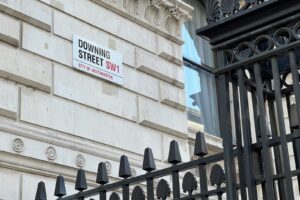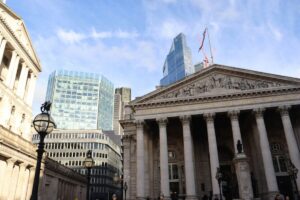Written by Philipp Bärtschi, chief investment officer at J. Safra Sarasin Sustainable Asset Management
US economy still strong — but for how long?
Despite the high levels of uncertainty, the US economy remained resilient in the second quarter. Economic activity in the US remains robust, particularly in the service sector, while there are signs of some slowdown in the manufacturing sector and the real estate market. The recent rise in the University of Michigan indicator suggests a recovery in consumer sentiment despite rising trade tariffs. Overall, the labour market remains in good shape, but surveys point to a gradual slowdown. Companies refer to reduced hours, a cut in overtime, as well as hiring freezes and planned job cuts. The decrease in the unemployment rate to 4.1% in June only came about because the number of people in the labour market also declined.
Consumer prices have continued to moderate, but the recent momentum probably does not yet reflect the significant increase in US import tariffs since the beginning of the year. While significant inventories may have helped to avoid price increases so far, surveys clearly show that companies intend to raise prices in the coming months. The expectation of higher prices is also reflected in a broader rise in inflation expectations. Therefore, the Fed is expected to maintain its wait-and-see stance at least until the September meeting, unless labour market conditions deteriorate excessively. The US fiscal package that has now been approved is unlikely to affect the economic trajectory this year but reduces the risk of a significant slowdown in growth next year. The package is also likely to put further pressure on the US dollar in the medium term.
Monetary turning point for Europe
The Purchasing Managers’ Indices (PMI) in the euro area continue to disappoint. Activity in Germany remains particularly weak, which is weighing on the economic momentum of the entire region. As a result, inflation in the eurozone fell to 1.9% YoY in May and core inflation was 2.3% YoY. This prompted the ECB to cut its policy rate from 2.25% to 2%. Economic growth should accelerate in the second half of 2025 due to monetary easing and German fiscal spending. In the UK, the Bank of England (BoE) is faced with a dilemma of declining growth momentum, a weak property market and persistently strong wage pressure.
Whilst the BoE kept its policy rate unchanged in June, it might have to accelerate the pace of rate cuts once the economic weakness becomes more apparent. With GDP growth of 2% in the first quarter, Switzerland has largely escaped the stagflationary momentum of the euro area. However, the labour market continued to cool and the strong Swiss franc pushed inflation down to -0.1% YoY in May. This supported the Swiss National Bank’s decision to cut its key interest rate to zero in June.
Yield curves steepen
After President Trump signed the ‘Big Beautiful Bill’ into law at the beginning of July, concerns about the sustainability of public finances have returned to the spotlight. These are likely to continue to weigh on government bonds with long maturities and lead to a steeper yield curve. There is potential for medium maturities, as the Fed is likely to cut interest rates towards the end of the year due to weaker growth. As the European Central Bank is also likely to cut interest rates further following a pause, there are interesting opportunities for bonds in this market. Inflation is not a major issue and therefore the risk of significantly higher interest rates seems limited. The credit markets have recovered from the setbacks in April and credit spreads have fallen to a less at tractive level. High-yield bonds should still perform well in an environment of robust growth.
US equities reach new highs
Driven by a rally in the US technology sector, US equity markets reached new highs at the beginning of July. The weakness of the US dollar has also boosted US equities in recent weeks, as this has led to a reversal in analysts’ earnings estimates. A weaker US dollar increases profits generated abroad, thus offsetting the pressure on margins expected from trade tariffs. On the other hand, the strong euro is putting pressure on the earnings estimates of European companies. Stock market valuations have now returned to the level of the first quarter and are historically very high, particularly in the USA. Profits must therefore be correspondingly positive to justify even higher share prices. Expectations for the results of the second quarter do not appear to be very high for US equities, which could lead to positive surprises.
Neutral positioning as optimism builds
Financial market uncertainty has decreased significantly in recent months. Economic growth is expected to weaken further, but a growth shock or recession are unlikely in the second half of the year. As both equities and bonds are likely to perform well in this environment, we have upgraded both asset classes from slightly underweight to neutral. Equity markets have recovered strongly since April, but many investors are still cautiously positioned. Asset managers who are sitting on cash are expected to invest more in the coming months. This should lead to further inflows and support all as set classes. The expectation of further interest rate cuts is also a positive factor for the financial markets and for growth prospects in the coming quarters. Depending on the reference currency, we are slightly underweight or neutral in cash. Alternative investments continue to be comprised of catastrophe bonds, gold and – depending on the mandate type – commodities or convertible bonds. These positions complement the portfolios by providing additional income and diversification.















